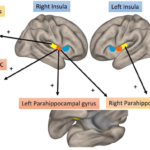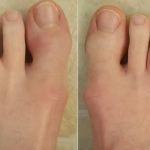 An overview of the research to date and the ways in which such evidence can be used to guide the treatment of patients was presented at the 2019 ACR/ARP Annual Meeting in a session titled Optimizing Outcomes in Psoriatic Arthritis: A Domain-Based Strategy. In the years since this presentation, additional research has helped supply greater insights into this topic and given rheumatologists information they can use to optimize care.
An overview of the research to date and the ways in which such evidence can be used to guide the treatment of patients was presented at the 2019 ACR/ARP Annual Meeting in a session titled Optimizing Outcomes in Psoriatic Arthritis: A Domain-Based Strategy. In the years since this presentation, additional research has helped supply greater insights into this topic and given rheumatologists information they can use to optimize care.
In the original session, Philip Mease, MD, clinical professor at the University of Washington School of Medicine and director of rheumatology research at the Swedish Medical Center, Seattle, discussed many of the key trials in psoriatic arthritis and summarized recommendations from the Group for Research and Assessment of Psoriasis and Psoriatic Arthritis (GRAPPA), the ACR and EULAR. Some of the core themes that emerged were the ideas that different pathophysiologic mechanisms may explain the different domains of psoriatic arthritis disease activity (i.e., arthritis, enthesitis, skin and nail involvement, etc.) and that the role of methotrexate in the treatment of psoriatic arthritis is still a point of some debate.
Today, Dr. Mease still emphasizes the importance of head-to-head studies in evaluating treatments for psoriatic arthritis and, in this regard, three studies stand out and deserve close attention from clinicians.
Research Behind Therapies
The first study is the SEAM-PsA trial, which sought to evaluate the efficacy of methotrexate monotherapy, etanercept monotherapy or methotrexate and etanercept in combination in patients with early psoriatic arthritis.1 Dr. Mease, the lead author of this large-scale, randomized, controlled clinical trial, says the research centered on patients in the early disease stage; participants had a median disease duration of just 0.6 years.
The primary end point of the study was ACR20, and Minimal Disease Activity was a key secondary end point. Patients treated with etanercept monotherapy achieved ACR20 and Minimal Disease Activity in similar numbers as those in the methotrexate/etanercept combination arm (61% and 65% for ACR20, and 36% and 36% for Minimal Disease Activity, respectively). This finding was of note because it supports the use of tumor necrosis factor-α inhibitor monotherapy in patients with psoriatic arthritis.

Dr. Mease
Another interesting finding in this study was that methotrexate monotherapy works surprisingly well for many patients, with 51% of patients achieving ACR20 and 23% achieving minimal disease activity.
Although methotrexate monotherapy has clearly demonstrated benefit in the treatment of rheumatoid arthritis, the evidence of this treatment has been mixed in psoriatic arthritis, with studies like the Tight Control in PsA (TICOPA) study and the RESPOND trial showing potential benefit, and the Methotrexate in Psoriatic Arthritis (MIPA) trial showing no significant advantage of methotrexate over placebo.2-4
Based in part on the strength of data for methotrexate monotherapy in the SEAM-PsA study, GRAPPA has now included methotrexate as a first-line treatment after nonsteroidal anti-inflammatory drugs (NSAIDs) for the treatment of enthesitis and dactylitis in patients with psoriatic arthritis.5
The second study of note is the SPIRIT-H2H trial, in which ixekizumab was compared with adalimumab for the treatment of psoriatic arthritis.6 In this study, 566 patients were randomized to receive either ixekizumab or adalimumab. The primary end point assessed the superiority of ixekizumab vs. adalimumab at week 24, measured by the proportion of patients who simultaneously achieved ACR50 and Psoriasis Area and Severity Index (PASI) 100.
Ixekizumab is an inhibitor of interleukin (IL) 17, and Dr. Mease notes that, prior to this study, there was a general perception that IL-17 inhibitors were helpful only in treating skin psoriasis and not the other domains of psoriatic arthritis. However, in the SPIRIT-H2H study, ixekizumab was non-inferior to adalimumab with respect to ACR50, with 51% of patients treated with ixekizumab achieving this target vs. 47% of patients on adalimumab. Ixekizumab was superior to adalimumab for PASI 100 response, with 60% of patients on ixekizumab vs. 47% of patients on adalimumab achieving this goal (P=0.001). Fewer serious adverse effects were seen in the ixekizumab group than in the adalimumab group (3.5% vs. 8.5%, respectively).
Given that the participants in this study were patients with psoriatic arthritis with inadequate response to at least one conventional synthetic disease-modifying anti-rheumatic drug (csDMARD), this study demonstrates that ixekizumab is an appealing option across musculoskeletal, as well as skin domains, in psoriatic arthritis for patients naive to biologic therapy.
The third study of importance is the EXCEED trial, which evaluated the efficacy and safety of secukinumab vs. adalimumab as first-line biologic monotherapy for 52 weeks in patients with active psoriatic arthritis.7 The primary end point in this study was ACR20.
A total of 853 patients with psoriatic arthritis were randomized to either the secukinumab group or the adalimumab group. By week 52, 67% of patients in the secukinumab group achieved ACR20 response and 62% of patients in the adalimumab group achieved this response (odds ratio 1.30, 95% confidence interval 0.98–1.72; P=0.0719), and the primary end point of superiority of secukinumab to adalimumab was not met.
Dr. Mease points out, however, that although only 14% of patients in the secukinumab group discontinued treatment by week 52, this number was 24% in the adalimumab group. This not only demonstrates that secukinumab may have greater treatment retention than adalimumab, but it also had a significant impact on the results of this study. If the study authors had used the non-responder imputation (NRI) method of analysis (i.e., if a subject drops out, that individual is assumed to be a non-responder independent of whether or not the subject was responding to treatment at the time of dropout), then this would have been a positive study.
Biomarkers Needed
In addition to results from head-to-head clinical trials evaluating treatments, Dr. Mease notes reliable, valid biomarkers to help clinicians evaluate patients with psoriasis are desperately needed. For example, it would be extremely helpful if biomarkers could be developed and applied to patients with psoriasis to predict who will develop psoriatic arthritis, or to differentiate patients with concomitant psoriasis and osteoarthritis or fibromyalgia from patients with psoriatic arthritis. It would also be useful if, when psoriatic arthritis is present, novel biomarkers could be used to gauge disease activity or predict response to specific treatments.
In patients with psoriasis, clinicians must seek to identify those with psoriatic arthritis early in the course of disease while avoiding misdiagnosis of patients with skin and musculoskeletal conditions that don’t fit the psoriatic arthritis diagnosis. Hopefully, the ability to identify patients with psoriatic arthritis and to help these individuals consistently select the best treatments for their disease domains will become a reality. At that time, treatment choices will be more than superficial. They will, instead, be clear, targeted and evidence based for all patients.
Jason Liebowitz, MD, completed his fellowship in rheumatology at Johns Hopkins University, Baltimore, where he also earned his medical degree. He is currently in practice with Skylands Medical Group, N.J.
References
- Mease PJ, Gladman DD, Collier DH, et al. Etanercept and methotrexate as monotherapy or in combination for psoriatic arthritis: Primary results from a randomized, controlled phase III trial. Arthritis Rheumatol. 2019 Jul;71(7):1112–1124.
- Coates LC, Moverley AR, McParland L, et al. Effect of tight control of inflammation in early psoriatic arthritis (TICOPA): A UK multicentre, open-label, randomised controlled trial. Lancet. 2015 Dec 19;386(10012):2489–2498.
- Baranauskaite A, Raffayová H, Kungurov NV, et al. Infliximab plus methotrexate is superior to methotrexate alone in the treatment of psoriatic arthritis
in methotrexate-naive patients: The RESPOND study. Ann Rheum Dis. 2012 Apr;71(4):541–548.
- Kingsley GH, Kowalczyk A, Taylor H, et al. A randomized placebo-controlled trial of methotrexate in psoriatic arthritis. Rheumatology (Oxford). 2012 Aug;51(8):1368–1377.
- Coates LC, Soriano E, Corp N, et al. OP0229 The Group for Research and Assessment of Psoriasis and Psoriatic Arthritis (GRAPPA) treatment
recommendations 2021. Ann Rheum Dis. 2021;80:139–140.
- Mease PJ, Smolen JS, Behrens F, et al. A head-to-head comparison of the efficacy and safety of ixekizumab and adalimumab in biological-naïve patients with active psoriatic arthritis: 24-week results of a randomised, openlabel, blinded-assessor trial. Ann Rheum Dis. 2020 Jan;79(1):123–131.
- McInnes IB, Behrens F, Mease PJ, et al. Secukinumab versus adalimumab for treatment of active psoriatic arthritis (EXCEED): A double-blind, parallel-group, randomised, active-controlled, phase 3b trial. Lancet. 2020 May 9;395(10235):1496–1505. Erratum in: Lancet. 2020 May 30;395(10238):1694.



